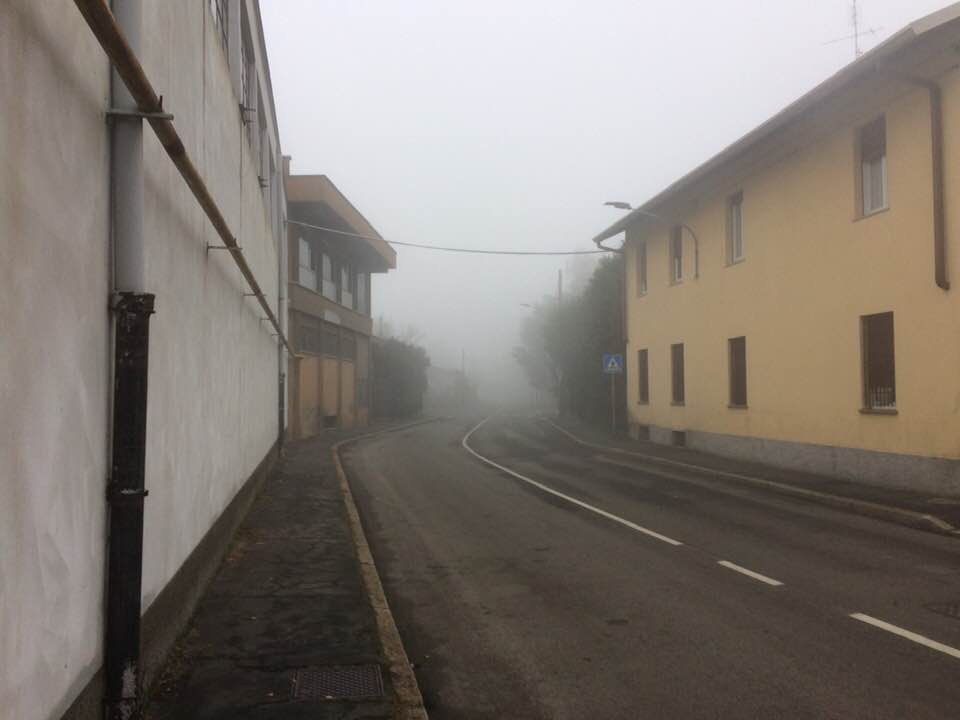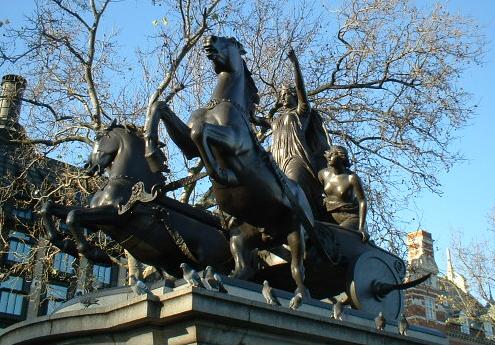|
Alberto Da Giussano
Alberto da Giussano (in Lombard ''Albert de Giussan'', in Latin ''Albertus de Gluxano'') is a legendary character of the 12th century who would have participated, as a protagonist, in the battle of Legnano on 29 May 1176. In reality, according to historians, the actual military leader of the Lombard League in the famous military battle with Frederick Barbarossa was Guido da Landriano. Historical analyses made over time have indeed shown that the figure of Alberto da Giussano never existed. In the past, historians, attempting to find a real confirmation, hypothesized the identification of his figure with ''Albertus de Carathe'' (Alberto da Carate) and ''Albertus Longus'' (Alberto Longo), both among the Milanese who signed the pact in Cremona in March 1167 which established the Lombard League, or in an Alberto da Giussano mentioned in an appeal of 1196 presented to Pope Celestine III on the administration of the church-hospital of San Sempliciano. These, however, are all weak ... [...More Info...] [...Related Items...] OR: [Wikipedia] [Google] [Baidu] |
Monumento "Alberto Da Giussano"
{{disambiguation ...
Monumento may refer to: * ''Monumento'' (album), a 2008 album by Dakrya * Monumento, a district in Caloocan, Philippines where the Bonifacio Monument is located ** Monumento LRT Station See also ''Monumento'' means monument in Portuguese, Spanish, and Filipino. For relevant articles in Wikipedia see: * Monuments of Portugal * Monument (Spain) The current legislation regarding historical monuments in Spain dates from 1985. However, ''Monumentos nacionales'' (to use the original term) were first designated in the nineteenth century. It was a fairly broad category for national heritage sit ... [...More Info...] [...Related Items...] OR: [Wikipedia] [Google] [Baidu] |
Holy Roman Empire
The Holy Roman Empire was a Polity, political entity in Western Europe, Western, Central Europe, Central, and Southern Europe that developed during the Early Middle Ages and continued until its Dissolution of the Holy Roman Empire, dissolution in 1806 during the Napoleonic Wars. From the accession of Otto I in 962 until the twelfth century, the Empire was the most powerful monarchy in Europe. Andrew Holt characterizes it as "perhaps the most powerful European state of the Middle Ages". The functioning of government depended on the harmonic cooperation (dubbed ''consensual rulership'' by Bernd Schneidmüller) between monarch and vassals but this harmony was disturbed during the Salian Dynasty, Salian period. The empire reached the apex of territorial expansion and power under the House of Hohenstaufen in the mid-thirteenth century, but overextending led to partial collapse. On 25 December 800, Pope Leo III crowned the List of Frankish kings, Frankish king Charlemagne as Carolingi ... [...More Info...] [...Related Items...] OR: [Wikipedia] [Google] [Baidu] |
Peace Of Constance
The Peace of Constance (25 June 1183) was a privilege granted by Frederick I, Holy Roman Emperor, and his son and co-ruler, Henry VI, King of the Romans, to the members of the Lombard League to end the state of rebellion (war) that had been ongoing since 1167. It was a permanent peace that superseded the six-year truce imposed by the Treaty of Venice (22 July 1177). With the expiration of the truce approaching, negotiations between the emperor and the league were begun in early 1183. There were proposals and counter-proposals, a separate settlement of the disputed status of Alessandria and a preliminary agreement signed at Piacenza. The treaty of Piacenza formed the basis for the final peace, which was issued as an imperial privilege because formally the emperor could not sign a treaty with his subjects. Terms The agreement confirmed the 1177 Treaty of Venice. The cities in the Kingdom of Italy retained several regalia of local jurisdiction over their territories and had t ... [...More Info...] [...Related Items...] OR: [Wikipedia] [Google] [Baidu] |
Arosio
Arosio ( Brianzöö: ; locally ) is a ''comune'' (municipality) in the Province of Como in the Italian region Lombardy, located about north of Milan and about southeast of Como. As of 31 December 2004, it had a population of 4,521 and an area of .All demographics and other statistics: Italian statistical institute Istat. Arosio borders the following municipalities: Carugo, Giussano, Inverigo. Arosio is a valuable town in Brianza a geographical area at the foot of the Alps, and is a part of the Parco della Valle del Lambro. It is crossed by two important roads named Nuova Vallassina and Novedratese The town hosted the Institute for Invalids where Don Carlo Gnocchi founded the Federation for Mutilated Children, in 1952 began the Juvenile Foundation, today known as the Don Carlo Gnocchi – ONLUS Foundation. The bird observatory A bird observatory is a centre for the study of bird migration and bird populations. They are usually focused on local birds, but may also include i ... [...More Info...] [...Related Items...] OR: [Wikipedia] [Google] [Baidu] |
Lombardia Milano9 Tango7174
(man), (woman) lmo, lumbard, links=no (man), (woman) , population_note = , population_blank1_title = , population_blank1 = , demographics_type1 = , demographics1_footnotes = , demographics1_title1 = , demographics1_info1 = , demographics1_title2 = , demographics1_info2 = , demographics1_title3 = , demographics1_info3 = , timezone1 = CET , utc_offset1 = +1 , timezone1_DST = CEST , utc_offset1_DST = +2 , postal_code_type = , postal_code = , area_code_type = ISO 3166 code , area_code = IT-25 , blank_name_sec1 = GDP (PPS) , blank_info_sec1 = €401 billion (2019) , blank1_name_sec1 = GDP per capita , blank1_info_sec1 = €39,700 (2019) $51,666 (2016) (PPP) , blank2_name_sec1 = HDI (2019) , blank2_info_sec1 = 0.912 · 4th of 21 , blank_name_se ... [...More Info...] [...Related Items...] OR: [Wikipedia] [Google] [Baidu] |
San Giorgio Su Legnano
San Giorgio su Legnano (Legnanese: ) is a ''comune'' (municipality) in the Metropolitan City of Milan in the Italian region Lombardy, located about northwest of Milan. San Giorgio su Legnano borders the following municipalities: Legnano, Villa Cortese, Canegrate, Busto Garolfo. It is located in the Po Valley northwest of Milan, from which it is 34 km away, near the valley in which the Olona river flows. Located slightly higher than the neighbouring Legnano (hence the preposition "su", en. "up", in the name), it is one of the smaller municipalities in the metropolitan city of Milan. Since 1957, the town has hosted the annual Campaccio competition, a cross country running event which attracts world class athletes.3 STELLE CHE ILLUMINANO IL CAMPACCIO Unione Sportiva Sangiorgese. ... [...More Info...] [...Related Items...] OR: [Wikipedia] [Google] [Baidu] |
Olona
The Olona (''Olona'' in Italian; ''Ulona'', ''Urona'' or ''Uòna'' in Western Lombard) is an Italian river belonging to the Po Basin, long, that runs through the Province of Varese and Metropolitan City of Milan whose course is developed entirely in Lombardy. The river born at 548 meters above sea level in the Fornaci della Riana locality at the Rasa of Varese, at the Sacro Monte di Varese, within the Campo dei Fiori regional park. After crossing the Valle Olona and the Alto Milanese, the Olona reaches Rho where it pours part of its water into the Canale Scolmatore Nord Ovest. After passing Pero, the river enters in Milan, where, at the exit of its underground route, it flows into the Lambro Meridionale, that flows into the Lambro at Sant'Angelo Lodigiano, in the quartier of San Cristoforo ending its course. Along the way, the water system formed by the Olona and the Lambro Meridionale crosses or laps 45 towns receiving the water of 19 tributaries. The Olona is know ... [...More Info...] [...Related Items...] OR: [Wikipedia] [Google] [Baidu] |
Battle Of Legnano
The Battle of Legnano was a battle between the imperial army of Frederick Barbarossa and the troops of the Lombard League on May 29, 1176, near the town of Legnano in present-day Lombardy, in Italy. Although the presence of the enemy nearby was already known to both sides, they suddenly met without having time to plan any strategy. The battle was crucial in the long war waged by the Holy Roman Empire in an attempt to assert its power over the municipalities of Northern Italy, which decided to set aside their mutual rivalries and join in a military alliance symbolically led by Pope Alexander III, the Lombard League. The battle ended the fifth and last descent into Italy of Emperor Frederick Barbarossa, who after the defeat tried to resolve the Italian question by adopting a diplomatic approach. This resulted a few years later in the Peace of Constance (June 25, 1183), with which the Emperor recognized the Lombard League and made administrative, political, and judicial concessi ... [...More Info...] [...Related Items...] OR: [Wikipedia] [Google] [Baidu] |
Dairago
Dairago ( lmo, Dairagh or , ) is a ''comune'' (municipality) in the Metropolitan City of Milan in the Italian region Lombardy, located about northwest of Milan. Dairago borders the following municipalities: Busto Arsizio, Legnano, Magnago, Villa Cortese, Buscate, Busto Garolfo, Arconate Arconate ( lmo, Arconaa or ) is a ''comune'' (municipality) in the Metropolitan City of Milan in the Italian region Lombardy, located about northwest of Milan. Arconate borders the following municipalities: Dairago, Buscate, Busto Garolfo, I .... References External links Official website Cities and towns in Lombardy {{Milan-geo-stub ... [...More Info...] [...Related Items...] OR: [Wikipedia] [Google] [Baidu] |
Cairate
Cairate is a ''comune'' (municipality) in the Province of Varese in the Italian region Lombardy, located about northwest of Milan and about south of Varese. Cairate borders the following municipalities: Carnago, Cassano Magnago, Castelseprio, Fagnano Olona, Locate Varesino, Lonate Ceppino, Tradate Tradate is a city and ''comune'' located in the province of Varese, in the Lombardy region of northern Italy. It is located from the city of Varese (the province's capital), and according to the 2018 census Tradate's population was 18,983. It r .... References External links Official website Cities and towns in Lombardy {{Varese-geo-stub ... [...More Info...] [...Related Items...] OR: [Wikipedia] [Google] [Baidu] |
La Battaglia Di Legnano Di Amos Cassoli
LA most frequently refers to Los Angeles, the second largest city in the United States. La, LA, or L.A. may also refer to: Arts and entertainment Music * La (musical note), or A, the sixth note * "L.A.", a song by Elliott Smith on ''Figure 8'' (album) * ''L.A.'' (EP), by Teddy Thompson * ''L.A. (Light Album)'', a Beach Boys album * "L.A." (Neil Young song), 1973 * The La's, an English rock band * L.A. Reid, a prominent music producer * Yung L.A., a rapper * Lady A, an American country music trio * "L.A." (Amy Macdonald song), 2007 * "La", a song by Australian-Israeli singer-songwriter Old Man River Other media * l(a, a poem by E. E. Cummings * La (Tarzan), fictional queen of the lost city of Opar (Tarzan) * ''Lá'', later known as Lá Nua, an Irish language newspaper * La7, an Italian television channel * LucasArts, an American video game developer and publisher * Liber Annuus, academic journal Business, organizations, and government agencies * L.A. Screenings, a te ... [...More Info...] [...Related Items...] OR: [Wikipedia] [Google] [Baidu] |
Scythed Chariot
The scythed chariot was a war chariot with scythe blades mounted on each side. It was employed in ancient times. History The scythed chariot was a modified war chariot. The blades extended horizontally for about to each side of the wheels. The Greek general Xenophon (430−354 BC), an eyewitness at the battle of Cunaxa, tells of them: "These had thin scythes extending at an angle from the axles and also under the driver's seat, turned toward the ground". Serrated bronze blades for chariot wheels have also been excavated from Zhou-era pre-imperial Chinese sites. Dismissing completely 17th to 19th century ideas of a Canaanite, Assyrian, Indian or Macedonian origin, Historian Alexander K. Nefiodkin challenges Xenophon's attribution of scythed chariots to the first Persian king Cyrus, pointing to their notable absence in the invasion of Greece (480−479 BC) by one of his successors, Xerxes I. Instead, he argues that the Persians introduced scythed chariots sometime later during th ... [...More Info...] [...Related Items...] OR: [Wikipedia] [Google] [Baidu] |



